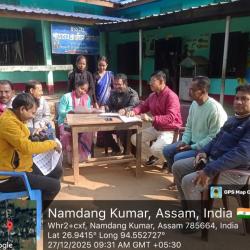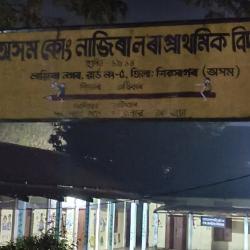Being a native of Assam, it is no surprise that I have always been greatly fascinated by the outdoors. So it was natural to heave a great sigh of relief when me and my husband decided to leave behind the hustle and bustle of Delhi and head off for Chandigarh and then on to Kasuali in Himachal Pradesh. The “City Beautiful”, as Chandigarh is aptly nicknamed, lies around 248 km from Delhi. Designed by Le Corbusier, Pierre Jeanneret, Matthew Nowicki, Albert Mayer and other architects, it is one of the most planned cities in India and owes its name to its presiding deity, Chandi, the Goddess of power. The wide roads, the green landscape and the big open spaces lend an unparalleled beauty to the city attracting tourists from far and near.
Chandigarh is home to many a garden. The most famous among them is the ‘Rose Garden’ with nearly 1600 varieties of roses. Being a rose lover, I decided to start off with the Rose Garden, which has achieved worldwide recognition and is considered to be the largest garden of its kind in Asia. The buzzing of honey bees and the billowing wind was like a welcome song as I entered the garden. The garden was in full bloom, with each variety of rose making me break into a song. While I was enjoying the beauty of the roses, I didn’t realise how quickly time had elapsed and I had covered around 30 acres of the garden without being tired. The fragrance of the roses and the twittering of the birds lent an unworldly charm to the garden. The excellent maintenance of the garden is praiseworthy. I wanted to spend an entire lifetime staring at the beautiful roses. And before I left the garden I remembered the words of J.A.Symonds who said….
“If Zeus had willed it so
That o'er the flowers one flower should reign a queen,
I know, ah well I know,
The rose, the rose, that royal flower had been!.....”
Another major tourist attraction in Chandigarh is the famous Rock Garden, built completely out of industrial and household waste, a unique creation of Nek Chand. Inaugurated as a public space in 1976, the Rock Garden has many beautiful exhibits made from waste materials besides waterfalls and pools. The Rock Garden is spread over a large area with sculptures of different animals, dancers, sportsmen, farmers, soldiers etc. arranged in a systematic manner. The beautifully sculpted figures are testimony to the imagination of the artist. Above all, the murals on the garden walls are sure to leave one wondering about the creative potential of the human mind.
A trip to Chandigarh cannot be complete without a visit to the Sukhna Lake. A man-made lake, it lies at the foothills of the Shivaliks and makes for some breathtaking sights. The tranquil atmosphere in the evening around the lake brings solace to the weary mind. The white swans swimming in the placid waters of the lake add to its gracefulness. The lake is also a destination for many migratory birds. Besides there are provisions for boating, yachting and other adventure sports in the lake.
After taking in the sights and sounds of the “City Beautiful” we decided to head for the cooler climes of Kasauli in the Solan district of Himachal Pradesh. Kasuali is around 65 kms from Chandigarh and lies at an altitude of about 1927 m. We left early in the morning as we wanted to be back in Chandigarh for the night. As the bus snaked its way around the wriggly hill roads, the environs began to change. Gone was the heat of the plains. In its place was the gentle wind and the swaying pine trees. Unlike Chandigarh, people did not seem to be in any hurry up here in Kasuali. Take it easy, seemed to be the mantra.

Christ Church, Kasuali
Kasuali, though small in size, has quite a few attractions. It is home to the Central Research Institute (CRI) established in 1905 as the premier institute in the field of immunisation and virological research. We, however, decided to give it a go-by and headed towards the prestigious Pasteur Institute established way back 1900. The Christ Church, one of the oldest churches in North India , is located in the centre of the town and is one of Kasauli’s major attractions. The entire town is divided into two parts –the Upper Mall and the Lower Mall. It was almost afternoon by that time and we were looking for a restaurant. Most of the restaurants were in the Lower Mall and so we had to walk down for lunch. Though the food was nothing to write about, it was enough to keep hunger pangs away. We then decided to visit the highest point of Kasauli –the Monkey Point. At the top of the peak is a small temple dedicated to Lord Hanuman. It is believed that the feet of Lord Hanuman touched the peak while he was returning to Lanka with the Sanjivani herb and offers a bird’s eye view of the plains below. It was a bewitching sight from the Monkey Point. Looking at the plains below, I wondered at the creation of The Almighty. Close to Kasuali is Sanawar, famous for the Lawrence School. We hurried to the bus stand for a bus to Sanawar. In the meantime we refreshed ourselves with a cup of tea and a samosa in a nearby tea-stall. The taste of the samosa forced me to ask the stall-owner about the method of its preparation and it was a trade-secret he happily revealed.

Sanawar
Bidding him goodbye, we then boarded the bus to Sanawar, a small town about 7 kilometres from Kasauli. It is a perfect place for nature lovers. The deodar and the pine trees here are such a picturesque sight .The flowers of the plum trees seemed like flakes of snow. We also visited the prestigious Lawrence Public School .Spread over a large area, the residential school was founded by Sir Henry Lawrence and his wife Honoria way back in 1847 and is one of the oldest co-educational boarding schools in the world. I wondered how lucky one would be to study in such a well–known school situated in such a serene environment . Spending some hours in the bosom of Nature, we started on our journey back to Chandigarh. From Chandigarh, it was back to Delhi again...though I did not relish the thought. However, as all good things must come to an end, so did this trip of ours.
- Add new comment
- 10338 reads










Comments
Add new comment